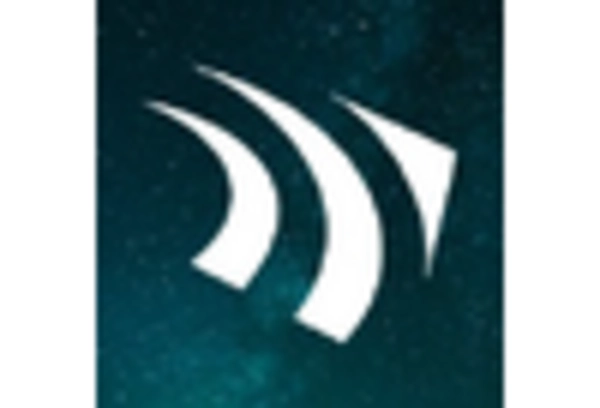The inflight advertising market in the US is characterized by a dynamic competitive landscape, driven by technological advancements and evolving consumer preferences. Key players such as Gogo (US), Global Eagle (US), and Panasonic Avionics (Japan) are at the forefront, each adopting distinct strategies to enhance their market positioning. Gogo (US) focuses on expanding its digital advertising capabilities, leveraging its extensive in-flight connectivity to offer targeted advertising solutions. Meanwhile, Global Eagle (US) emphasizes partnerships with airlines to integrate advertising seamlessly into their entertainment systems, thereby enhancing user engagement. Panasonic Avionics (Japan) is investing heavily in innovative content delivery systems, which not only improve passenger experience but also create new advertising opportunities. Collectively, these strategies contribute to a competitive environment that is increasingly reliant on technological innovation and customer-centric solutions.
In terms of business tactics, companies are increasingly localizing their operations and optimizing supply chains to enhance efficiency and responsiveness. The market appears moderately fragmented, with several players vying for market share, yet the influence of major companies remains substantial. This competitive structure allows for a diverse range of advertising solutions, catering to various airline needs and passenger demographics, while also fostering innovation through competition.
In October 2025, Gogo (US) announced a strategic partnership with a leading digital marketing firm to enhance its advertising analytics capabilities. This move is likely to enable Gogo to provide more precise targeting for advertisers, thereby increasing the effectiveness of inflight ads. By integrating advanced analytics, Gogo aims to attract more advertisers seeking measurable outcomes from their campaigns, potentially reshaping the inflight advertising landscape.
In September 2025, Global Eagle (US) launched a new suite of advertising solutions designed specifically for the airline industry, which includes interactive ad formats and real-time engagement metrics. This initiative appears to position Global Eagle as a leader in innovative advertising solutions, allowing airlines to offer more engaging content to passengers. The strategic importance of this launch lies in its potential to enhance passenger experience while simultaneously increasing revenue streams for airlines through more effective advertising.
In August 2025, Panasonic Avionics (Japan) unveiled a new platform that integrates artificial intelligence (AI) into its inflight entertainment systems, allowing for personalized advertising experiences. This development suggests a significant shift towards more tailored advertising, which could lead to higher engagement rates among passengers. The strategic importance of this AI integration lies in its ability to provide advertisers with deeper insights into consumer behavior, thereby enhancing the overall effectiveness of inflight advertising campaigns.
As of November 2025, the competitive trends in the inflight advertising market are increasingly defined by digitalization, sustainability, and the integration of AI technologies. Strategic alliances among key players are shaping the landscape, fostering innovation and enhancing service offerings. Looking ahead, competitive differentiation is likely to evolve from traditional price-based competition to a focus on innovation, technological advancements, and supply chain reliability. Companies that can effectively leverage these trends will likely secure a competitive edge in this rapidly changing market.

















Leave a Comment